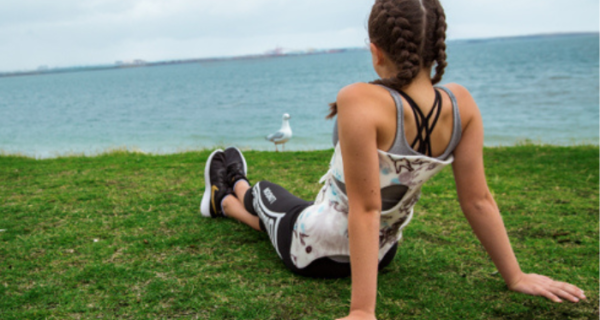Routinely, adolescents with idiopathic scoliosis (AIS) that have curves over 40-50 degrees are referred for surgical opinion [1]. Some patients will refuse surgery and would prefer to try bracing [1], however there has been some debate as to whether this is an appropriate course of treatment for these patients [1]. Rigid bracing and physiotherapeutic scoliosis specific exercises (PSSE) are the recommended treatment for curves between 20-40 degrees [2]. The effectiveness of bracing for AIS is improved with increased hours of brace wear time [3].
Surgeons will usually recommend surgery for severe AIS exceeding 40-55 degrees [4, 5]. Surgery can reduce the Cobb angle and improve the postural asymmetries however it is not without significant risk [1]. Many patients and families would still prefer to continue to wear a brace [1].
What Does the Research Say?

A recent review of the literature was conducted to investigate if bracing can control the progression of AIS in curves greater than 40 degrees. The results of this systematic review and meta-analysis reported that bracing could alter the normal course of AIS with curves 40 degrees or more in patients refusing posterior spinal fusion (PSF) [1].
While this paper was published recently (2023) [1], there have been earlier reports of the possibility of brace treatment as a treatment option for AIS who refuse surgery [2]. A group of highly regarded Italian researchers conducted an observational study which was published in 2014 [2]. The results of this study indicated bracing plus specific exercise treatment, ‘if correctly performed and managed’ is a suitable alternative for patients who reject surgical treatment with curves beyond 45 degrees. They also recommended that brace treatment should be considered as the first choice in AIS to avoid fusion due to the costs and risk of surgery [2].
What are the Treatment Options?
If a patient refuses surgery, then PSSE such as ScoliBalance, combined with bracing, may be a suitable option to consider for the patient. There are several ways to consider the potential benefits to the treatment approach:
- If an intensive course of bracing and PSSE is attempted, then curve flexibility may improve, which may be beneficial for surgery if surgery is eventually decided by the patient to be their preferred treatment option. If anything, it may also help prevent further deformity and progression prior to surgery.
- If an intensive course of bracing and PSSE is attempted under the care of an appropriately qualified and experienced team, then it is possible that the patient will achieve some or all of their goals [3, 4]. Remember reduction of Cobb angle is not the only goal. Where possible, treatment goals may aim for reduction of the curve. Where that is not possible, goals could aim for stabilisation of the curve. At all times it is important to aim for achieving patient goals. Potential goals of the patient and treating team may include [4]:
- Reduction of the curve
- Stabilisation of the curve
- Reduced risk of further progression
- Prevention of the need for more treatment in adulthood
- Reduction of pain
- Improvement of aesthetics
- Prevention of respiratory issues.
- Using PSSE combined with bracing can help teach the patient about their body so that when it is time to wean from the brace the patient knows how to hold their corrective posture and it can help to maintain any improvements that they have made [6].
Early detection is essential to giving patients choice of treatment. However when patients have been recommended surgery but have just simply refused this option, they may want to consider a course of PSSE and bracing to attempt to achieve their goals. If the patient improves, or stabilises with non-surgical treatment, then they still have the option later on to consider surgery should they change their mind.
Questions about Bracing?
If you’re considering scoliosis bracing as a treatment option for yourself or loved one, it’s important to investigate all the available options.
Developed in 2011, ScoliBrace was invented to create a better conservative way to successfully treat patients with scoliosis. It is available worldwide and is a truly custom 3D scoliosis brace used to treat scoliosis in children, adolescents and adults. If you have questions or would like to speak to a certified provider of ScoliBrace, find a clinic near you
References
- Babaee, T., et al., Does bracing control the progression of adolescent idiopathic scoliosis in curves higher than 40? A systematic review and meta-analysis. Asian Spine Journal, 2023. 17(1): p. 203.
- Negrini, S., et al., 2016 SOSORT guidelines: orthopaedic and rehabilitation treatment of idiopathic scoliosis during growth. Scoliosis and spinal disorders, 2018. 13(1): p. 1-48.
- Lusini, M., et al., Brace treatment is effective in idiopathic scoliosis over 45: an observational prospective cohort controlled study. The Spine Journal, 2014. 14(9): p. 1951-1956.
- Zaina, F., et al., Specific exercises performed in the period of brace weaning can avoid loss of correction in Adolescent Idiopathic Scoliosis (AIS) patients: Winner of SOSORT’s 2008 Award for Best Clinical Paper. Scoliosis, 2009. 4(1): p. 1-6.
- Negrini, S., et al., Why do we treat adolescent idiopathic scoliosis? What we want to obtain and to avoid for our patients. SOSORT 2005 Consensus paper. Scoliosis, 2006. 1: p. 1-14.
- Weinstein, S.L., et al., Effects of bracing in adolescents with idiopathic scoliosis. New England Journal of Medicine, 2013. 369(16): p. 1512-1521.


